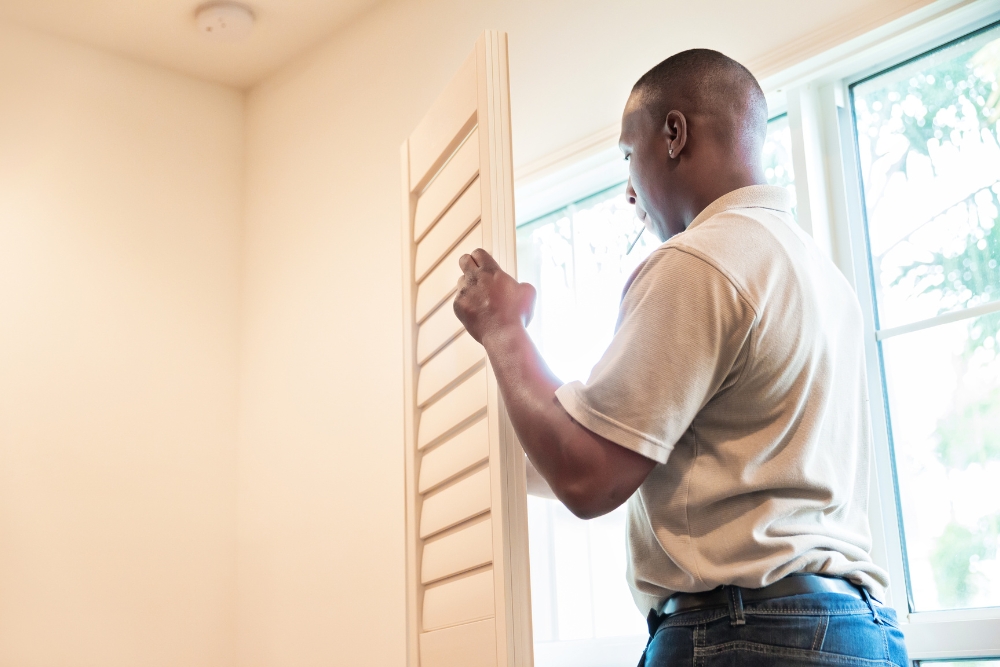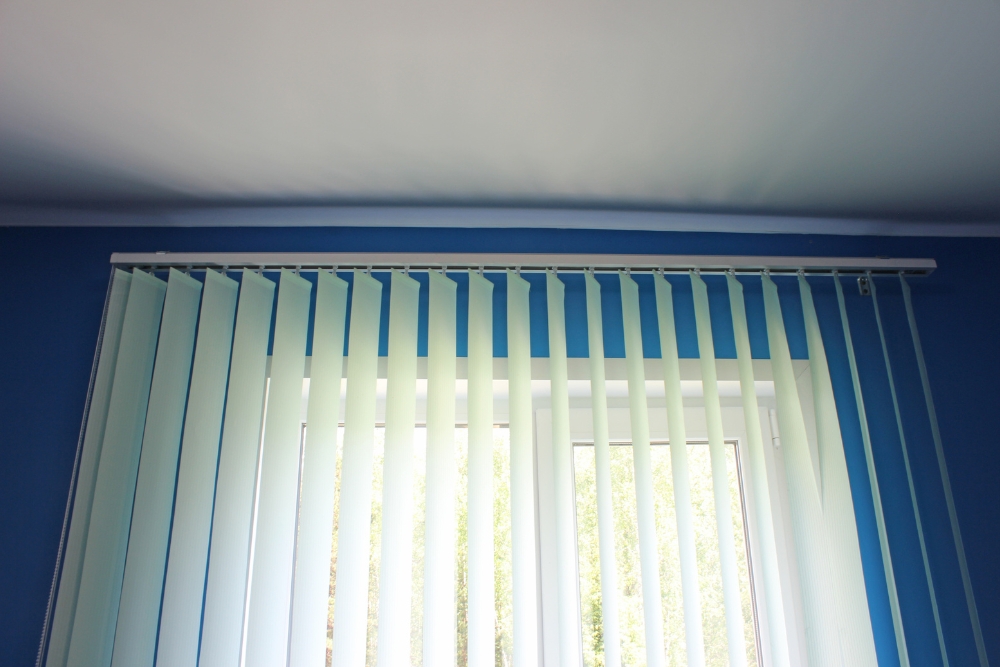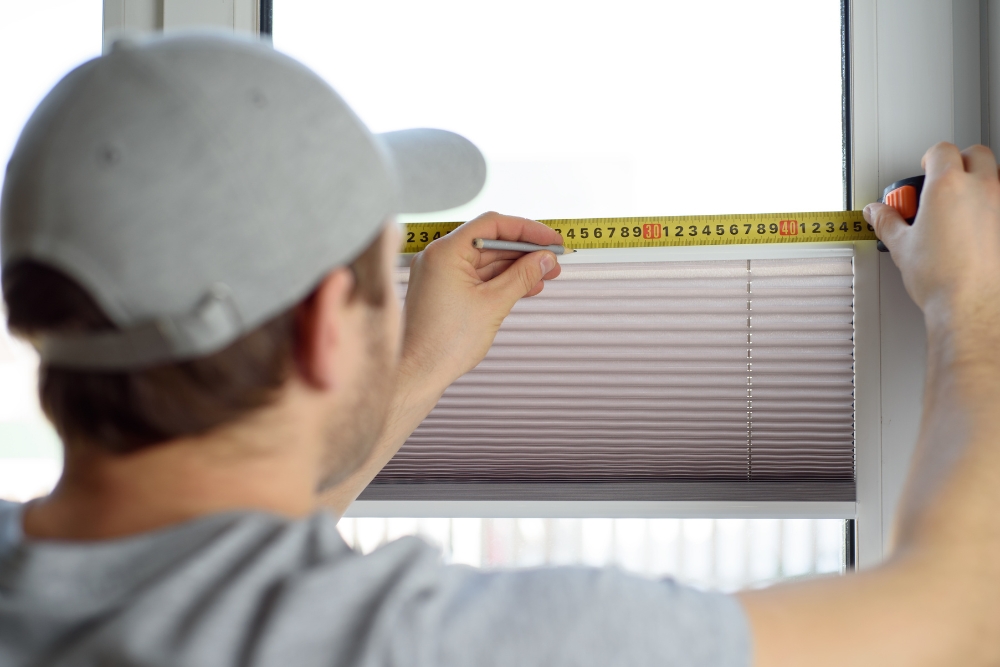We all know the feeling, of wanting to do our bit for the earth and making eco-conscious choices where we can. And when it comes to sprucing up our homes with new window coverings, it’s no different.
Like many Aussies out there, we’re switched on to how these choices affect our beautiful environment – it’s a real eye-opener that about 1 million tonnes of old blinds are chucked out and end up in landfill each year! But don’t stress, this yarn is all about the sustainable materials that are changing the game in blind manufacturing.
Time to learn how you can give your windows a fresh look while doing right by mother nature – ready to take the plunge into greener living? Let’s have a squiz!
Key Takeaways
- Basswood and cedar are top choices for sustainable blinds because they’re responsibly sourced, recyclable, and biodegradable. These materials help cut down on waste and support a circular economy.
- Choosing blinds made of these eco-friendly woods not only adds natural beauty to your space but also boosts energy efficiency. They keep homes cooler in summer and warmer in winter, which can save money on energy bills.
- The demand for green products is rising fast. More customers want blinds that don’t harm the environment, leading manufacturers to use more sustainable materials like basswood and cedar in their products.
- Sustainable blinds are holding their own against traditional materials when it comes to price and quality. As more people buy them, prices drop, making it easier for everyone to go green without breaking the bank.
- The COVID-19 pandemic has increased interest in environmentally friendly home products. This means companies are now working harder than ever to create blinds that meet this new demand while still being kinder to our planet.
Environmental Impact of Blinds Production
The production of blinds has a significant environmental impact, particularly when it comes to the carbon footprint of materials such as wood, aluminium, and plastic.
It’s important to consider the sustainability of these materials to reduce our ecological footprint.
Carbon footprint of materials (wood, aluminium, plastic)
When considering the materials we use for manufacturing blinds, it’s essential to understand their carbon footprint. Here’s a quick look at how wood, aluminium, and plastic stack up against each other in terms of environmental impact.
We’re dedicated to reducing our impact on the planet, and by choosing materials wisely, we can make a big difference. Basswood and cedar are our go-to for a greener option in blind production.

| Material | Carbon Footprint | Comments |
|---|---|---|
| Wood | Low-Medium | Wood blinds have a variable carbon footprint depending on the source. Responsibly harvested wood like basswood and cedar is more sustainable. |
| Aluminium | High | Aluminium production is energy-intensive, contributing to a higher carbon footprint, but it’s durable and recyclable. |
| Plastic | High | Plastic blinds often come from non-renewable sources and are less biodegradable, leading to a significant carbon footprint. |
The Sustainability of Basswood and Cedar in Blinds Production
Basswood and cedar are sustainable materials for blind production, sourced responsibly and offering recyclability and biodegradability. Their energy efficiency and insulation properties make them a great choice for eco-conscious consumers.
Sustainable sourcing
When choosing blinds for your home or office, it’s essential to consider the sustainability of the materials used. Sustainable sourcing ensures that the raw materials are harvested responsibly, without causing harm to the environment or depleting natural resources.
By opting for blinds made from sustainably sourced materials such as basswood and cedar, you can contribute to conservation-minded production and support the use of renewable resources.
These slow-growing timbers offer eco-conscious consumers an opportunity to make a positive impact by selecting environmentally friendly window coverings that align with urban design trends and promote green manufacturing practices.
Opting for blinds made from sustainably sourced materials helps reduce our carbon footprint while supporting low-impact manufacturing processes. Whether it’s recycled ocean plastic or biodegradable materials, responsible sourcing plays a vital role in promoting environmental sustainability within the roller blinds market.
Recyclability and biodegradability
Basswood and cedar blinds are not only sustainably sourced but are also highly recyclable and biodegradable. At the end of their lifecycle, these materials can be repurposed or recycled into new products rather than ending up in landfills.
With growing environmental concerns, using blinds made from these materials is a step towards reducing waste and promoting a circular economy. Additionally, should they find their way into the environment, basswood and cedar blinds will naturally break down without leaving behind harmful substances, minimising their impact on ecosystems.
The recyclability and biodegradability of basswood and cedar provide peace of mind to environmentally conscious consumers who are seeking sustainable window coverings that align with their values.
Energy efficiency and insulation properties
Moving from the recyclability and biodegradability of sustainable blind materials to their energy efficiency and insulation properties, it’s essential to consider how these features can impact your living or working environment.
Basswood and Cedar blinds provide excellent insulation, helping to regulate indoor temperatures by trapping heat in winter and blocking out excessive heat during summer, reducing the need for additional heating or cooling.
This not only creates a more comfortable atmosphere but also contributes to lower energy consumption, aligning with sustainability goals. The natural insulating properties of these materials make them ideal for maintaining a pleasant interior climate while reducing reliance on artificial climate control.
Moreover, the energy-efficient nature of Basswood and Cedar blinds enables you to create a more sustainable space within your home or office without compromising on style or functionality.
These eco-conscious materials work in harmony with your efforts towards an environmentally friendly lifestyle while offering tangible benefits such as reduced utility bills and decreased carbon footprint through lowered energy usage.

Benefits of Using Basswood and Cedar in Blinds
Basswood and cedar blinds offer natural beauty and aesthetic appeal, providing a warm and inviting atmosphere to any space. In addition, these sustainable materials can help reduce energy consumption, increase comfort, and promote responsible harvesting in slow-growth regions.
Natural beauty and aesthetic appeal
Basswood and cedar blinds bring warm, natural beauty to any interior. The rich grain patterns and earthy tones of these sustainable materials add a touch of timeless elegance to your space.
Each piece is unique, adding character and charm to your windows while creating a warm and inviting atmosphere. Cedar’s distinct reddish-brown hue adds depth and richness while basswood’s creamy colour complements various design styles. These natural materials offer an aesthetic appeal that enhances the overall look and feel of your home or office, providing a stylish yet eco-friendly window covering solution that reflects your commitment to sustainability without compromising on style or quality.
Reduced energy consumption and increased comfort
Basswood and Cedar blinds help to reduce energy consumption, keeping your space cooler in summer and warmer in winter. These sustainable materials offer excellent insulation properties, cutting down on the need for excessive heating or cooling.
This not only saves you money on utility bills but also contributes to a more comfortable indoor environment throughout the year, creating a more eco-friendly home or office setting.
By using Basswood and Cedar blinds, you can experience enhanced comfort while contributing to environmental conservation efforts. These materials are ideal for environmentally conscious individuals looking to make sustainable choices without compromising on quality or aesthetics.
Responsible for harvesting and slow-growth regions
Responsible harvesting of timber for blinds production ensures that the process does not harm the environment or deplete natural resources. By sourcing wood from slow-growth regions, we support sustainable forestry practices that prioritise long-term forest health.
This means using basswood and cedar in blinds production promotes ethical sourcing and conservation-minded production, helping to protect our planet’s precious resources. Selecting materials from slow-growth regions also guarantees the quality and durability of the blinds, ensuring they stand the test of time while maintaining their aesthetic appeal.
Trends in Sustainable Blinds Manufacturing
We’ll explore the growing consumer demand for eco-friendly products and the integration of sustainable materials in blind production. We’ll also discuss how COVID-19 has impacted the growth of the sustainable blinds market and how these materials are competing with traditional blind materials in terms of price and quality.
Growing consumer demand for eco-friendly products
Consumers increasingly seek eco-friendly products, including blinds made from environmentally conscious materials like basswood and cedar. We see a shift towards sustainable options due to rising environmental awareness.
Homeowners are prioritising energy-efficient, recyclable, and responsibly sourced blinds to reduce their carbon footprint and contribute to sustainability efforts. This growing demand is reshaping the blind manufacturing industry as it adapts to meet consumer needs for eco-conscious materials in window coverings.
Integration of sustainable materials in blinds production
Manufacturers are increasingly integrating sustainable materials such as basswood and cedar into blind production. These natural, eco-friendly materials offer durability, energy efficiency, and a stylish aesthetic.
The incorporation of these sustainable materials aligns with the growing demand for environmentally friendly products in the roller blinds market. As home or office owners seek to reduce their carbon footprint and create healthier indoor environments, the shift towards using slow-growing timber and recycled materials in blind manufacturing continues to gain momentum.
Moving beyond traditional blind materials allows for enhanced sustainability without compromising on quality or style. Embracing these changes presents an opportunity for a greener approach to window treatments that resonates with environmentally conscious consumers.
The use of renewable resources like basswood and cedar offers a promising future for eco-friendly blinds that meet both functional and aesthetic needs.
Impact of COVID-19 on the growth of sustainable blinds market
As sustainable materials become more integrated into blinds production, the COVID-19 pandemic has significantly impacted the growth of the sustainable blinds market. Consumers are increasingly prioritising products that are environmentally conscious and produced with low environmental impact.
As a result, there is a growing demand for eco-friendly blinds that use materials like basswood and cedar, as well as recycled plastic blinds. This shift is pushing manufacturers to adapt their production processes to meet this rising consumer preference for environmentally friendly materials in blind manufacturing.
The effects of COVID-19 have accelerated the awareness and demand for sustainability across various industries, including the blinds market. Homeowners and office owners are now seeking out options that align with their values of environmental consciousness and conservation-minded production.
Competing with traditional blind materials in terms of price and quality
Sustainable blinds made from basswood and cedar are increasingly competitive in both price and quality compared to traditional blind materials. The cost of these sustainable options is becoming more favourable as demand increases, making them a viable choice for homeowners or office owners seeking eco-friendly solutions without compromising on aesthetics or functionality.
Additionally, the durability and insulation properties of basswood and cedar blinds ensure that they provide long-term value, requiring less frequent replacements than some conventional options.
Moreover, the growing availability of sustainably sourced timber contributes to the overall affordability of eco-friendly blinds. This broadening market ensures that consumers have access to competitively priced sustainable alternatives.
Maximise Sustainable Materials within Your Space
In conclusion, the shift towards sustainable materials in blind manufacturing is paramount. It impacts not only the environment but also our daily lives. The increasing demand for eco-friendly products signifies a positive change in consumer behaviour.
Embracing slow-growing timber and low-impact manufacturing techniques is essential for a greener, more conscious future. We must continue to support sustainable production to preserve our planet for generations to come.

